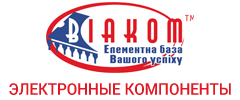Збирач потоків
Top 10 Drone Camera Companies in India
India’s drone industry has witnessed significant growth, driven by advancements in technology and a surge in demand across various sectors such as defense, agriculture, and infrastructure. Several companies have emerged as leaders in drone manufacturing and services, offering innovative solutions tailored to diverse applications. Here are the top 10 drone camera companies in India as of 2025:
- IdeaForge Technology Pvt. Ltd.
Founded in 2007 by IIT Bombay alumni, IdeaForge is a pioneer in India’s UAV industry. The company specializes in designing and manufacturing drones for defense, homeland security, and industrial applications. Notable products include the Netra, a micro UAV designed for surveillance and reconnaissance missions, and the Switch UAV, known for its long-endurance capabilities. In December 2023, IdeaForge ranked 5th globally in the dual-use category (civil and defense) as per a report by Drone Industry Insights.
- Asteria Aerospace Limited
Established in 2011 and headquartered in Bengaluru, Asteria Aerospace focuses on developing drones for defense and industrial applications. The company offers products like the A200, which received India’s first micro category drone certification in October 2022, and the A200-XT and A410-XT, both certified by the Directorate General of Civil Aviation (DGCA). Asteria also launched SkyDeck, a cloud-based drone operations platform that provides services such as flight planning, data processing, and AI-based analysis.
- Garuda Aerospace
Based in Chennai and founded in 2015, Garuda Aerospace offers drone solutions across various sectors, including agriculture, disaster management, and defense. The company provides custom drones, sensors, and software for aerial surveys, mapping, and inspections. Garuda has collaborated with organizations like ISRO for delivering medicines and food using drones and has been active in disaster relief efforts, such as assisting in rescue operations during the Uttarakhand avalanche in 2021. Indian cricketer Mahendra Singh Dhoni is its brand ambassador and shareholder.
- Skylark Drones Pvt. Ltd.
Skylark Drones provides drone-based solutions for industries like agriculture, mining, and construction. Their offerings include autonomous drones, custom payloads, and mapping software. The company has partnered with leading firms such as Tata Power and Mahindra & Mahindra to implement drone-based solutions, enhancing operational efficiency and data accuracy.
- Aarav Unmanned Systems Pvt. Ltd.
Headquartered in Bangalore, Aarav Unmanned Systems specializes in manufacturing drones for defense and commercial applications. Their product lineup includes the Nayan series for surveillance and the Cheetah series for aerial surveys and mapping. Notably, Aarav has developed a drone-based delivery system for medical supplies and emergency response services, successfully tested in collaboration with the Karnataka government.
- Aero360
Based in Delhi, Aero360 offers a range of drone services, including aerial surveys, mapping, and photography. The company has developed proprietary software capable of processing drone data to generate accurate 3D models and maps. Aero360 has collaborated with major companies like Larsen & Toubro and the Adani Group to provide drone-based solutions for various projects.
- Sagar Defence Engineering Pvt. Ltd.
Located in Pune, Sagar Defence Engineering focuses on providing drone solutions for defense and homeland security applications. Their Garuda series drones are designed for high-altitude, long-endurance missions, suitable for surveillance and reconnaissance. The company has also developed a drone-based anti-poaching system, tested in partnership with the Maharashtra forest department.
- Vignan Technologies Pvt. Ltd.
Operating out of Hyderabad, Vignan Technologies offers drone solutions for agriculture, mining, and construction industries. Their products include custom drones, agricultural sensors, and mapping software. The company has developed a precision agriculture system that provides farmers with real-time data on soil moisture, temperature, and other critical parameters to enhance crop yields.
- Omnipresent Robot Technologies Pvt. Ltd.
Based in Bangalore, Omnipresent Robot Technologies provides drone solutions for industrial inspection and maintenance. Their offerings include custom drones, sensors, and software designed to inspect infrastructure such as buildings and pipelines. The company has partnered with industry leaders like Reliance Industries and Larsen & Toubro to implement drone-based inspection solutions.
- Tata Advanced Systems Limited (TASL)
A subsidiary of Tata Sons, TASL is involved in aerospace and defense manufacturing. The company has agreements with Israel Aerospace Industries and Urban Aeronautics for the co-development of UAVs in India. TASL has developed and successfully flight-tested a long-range kamikaze drone known as the ALS-50, capable of striking targets beyond 50 km and returning if the mission is aborted. This drone is set to be inducted into the Indian armed forces.
These companies exemplify the rapid advancement of drone technology in India, offering a range of products and services that cater to both domestic and international markets. Their innovations are contributing significantly to sectors such as defense, agriculture, infrastructure, and emergency response, positioning India as a key player in the global drone industry.
The post Top 10 Drone Camera Companies in India appeared first on ELE Times.
🎥 Лекція про дипломатію в сучасному контексті військової агресії проти України
🇫🇷 Надзвичайний і Повноважний Посол Французької Республіки в Україні Гаель Весьєр вперше відвідав наш університету і виступив із важливою лекцією про дипломатію в сучасному контексті військової агресії проти України.
🎥 Лекції для молодих дослідників
Колектив Науково-технічної бібліотеки імені Г.І. Денисенка підготував базовий комплексний курс відкритих лекцій "Must-have для дослідницької діяльності" для аспірантів КПІ ім. Ігоря Сікорського та для всіх охочих до нових знань дослідників.
Marconi SWB-11 WW2 era
 | This is my grandfather during WW2 inspecting what I believe is a Marconi SWB-11. Grandpa was an Australian based radtech for the Army. I am curious in anyone knows what the designation of KURE II is for. [link] [comments] |
CGD’s senior VP of global sales to lead expansion into additional markets
🧬 Конкурс стартап-проєктів у сфері медичної інженерії та здоров’я людини
Інноваційна екосистема Sikorsky Challenge Ukraine оголошує Конкурс стартап-проєктів у сфері медичної інженерії та здоров’я людини, метою якого є пошук інноваційних рішень, які сприятимуть збереження людського капіталу і відповідно зростанню багатьох галузей української економіки.
A class of programmable rheostats
 Basic programmable rheostats
Basic programmable rheostats
For many variable resistor (rheostat) applications, one of the device’s terminals is connected to a voltage source VS. Such a source might be a reference DC voltage, an op amp output carrying an AC plus DC signal, or even ground. If freed from the constraint of (programmable) “floating” rheostats satisfied by recently disclosed solutions in “Synthesize precision Dpot resistances that aren’t in the catalog” and “Synthesize precision bipolar Dpot rheostats,” there is a compelling alternative approach. Yes, it’s slightly simpler in that it avoids MOSFETs, and that the +5V supply for the digital potentiometer is the only supply needed (especially if rail-to-rail input and output op-amps are employed.) But more importantly, it’s distinct in that it exhibits no crossover distortion when there is a change in the sign of an AC signal between terminals A and VS.
Wow the engineering world with your unique design: Design Ideas Submission Guide
As seen in Figure 1, I’m shamelessly appropriating the same digital pot used in those other solutions. (Note the limited operating voltage range of potentiometer U2.)
 Figure 1 A basic programmable rheostat leveraging the same digital pot used in other solutions.
Figure 1 A basic programmable rheostat leveraging the same digital pot used in other solutions.
The resistance between terminals A and voltage source VS looking into terminal A is res = R1/(1 – αa·α2·αb) where the alphas are the gains of U1a, U2, and U1b respectively. αa and αb are slightly less than unity at DC, falling in value with loop gain as frequency increases. α2 is equal to one of the numerator integers 0, 1, 2… 256 divided by a denominator of 256 as determined by the programming of U2.
By changing the numerator from 0 to 255, it would appear that resistor value ratios of 1:256 could be achieved. Unfortunately, U2’s integral non-linearity (INL) is specified as ± 1 LSB. Strictly following this spec, operation with a numerator of 255 could drive the value of res close to infinity at DC and so should be avoided. But that’s not the only concern. For an α2 numerator value “num”, a resistance error factor EF of roughly ± 1/(256-num) could be encountered because of the ± 1 LSB accuracy. To minimize uncertainty, num should be held to less than some maximum value (solutions in “Synthesize precision Dpot resistances that aren’t in the catalog” and “Synthesize precision bipolar Dpot rheostats” have similar problems for small values of “num”). Another reason for such a limit is that resistance resolution is much better with lower than higher values of “num”. For instance, the ratio of resistor values with numerators of 10 and 11 is 1.004. But the values of 240 and 241 yield a ratio of 1.07, and those of 250 to 251, 1.2.
Enhanced programmable rheostatThe simple addition of U3 and R2 in the Figure 2 circuit mitigates these problems by reducing the required maximum value of “num”. For R2 greater than R1, resistances between R1 and R2 should be implemented by having analog switch U3 select R1 rather than R2. For larger resistances, R2 should be selected.

Figure 2 Enhanced programmable rheostat that mitigates the uncertainties problems of the basic programmable rheostat by reducing the required maximum value of “num”.
To see why Figure 2 offers an enhancement, consider a requirement to provide resistance over the range of 1k to 16k. In Figure 1 and Figure 2 circuits, R1 would be 1k. To produce a value of 1k, “num” would be 0. For 16k, “num” in Figure 1 would be 240, yielding a maximum EF of ± 1/(256 – 240) or approximately 6.3%. But in Figure 2, resistance values of 4K and above would be derived by having U3 switch R1 out in place of a 4k R2. The maximum required value of “num” would be 192, and EF would be reduced by a factor of 4 to 1.6%. It will also be seen that the Figure 2 circuit significantly relaxes op-amp performance requirements for limiting the errors due to finite open loop gains. To see this, some analysis is necessary. Given the maximum allowed fractional resistance error (OAerr) introduced by the op-amp pair, it can be seen that:
 Therefore, for closed loop op amp gains:
Therefore, for closed loop op amp gains:

At DC, op amp voltage follower closed loop gain α is 1/(1-1/a0L), where a0L is the op amp open loop DC gain. To satisfy requirements at DC:
![]()
Matters are more complicated with AC signals. At a frequency f Hz, the voltage follower open loop gain HOLG(j·f) is 1 / (1/A0 + j·f/GBW), where GBW is the part’s gain-bandwidth product and j = √-1.
The closed loop gain HCLG(j·f) is 1/( 1 + 1/ HOLG(j·f)). Substitution of HCLG(j·f) for αa and αb in Equation (1) yields a fourth order polynomial due to the real and imaginary terms of HCLG(j·f). It’s easier to solve the problem with a simulation in LTspice than to solve it algebraically.
LTspice offers a user-specifiable op-amp called…well, “opamp”. It can be configured for user-selected values of a0L and GBW. The tool is configured as shown in Figure 3 to solve this problem.

Figure 3 LTspice can be used to determine op-amp requirements for an AC signal application.
The a0L value required for AC signals will be larger than that calculated in equation (3). It’s suggested to start with an a0L default value of 10000 (100 dB) and try different values of GBW. Use the results to select an op amp for the actual circuit and either simulate it if a model exists or at least update the simulation with the minimum specified values of a0L and GBW for the selected op amp.
Table 1 shows some examples of the behaviors of the circuit with different idealized op-amps. It’s clear that DC performance in either circuit is not a challenge for almost any op-amp. But it’s also evident that the AC performance of a given op-amp is notably better in the Figure 2 circuit than in that of Figure 1, and that a given error can be achieved with a lower performance and less costly op-amp in the Figure 2 circuit.
| Figure 1, R1 = 1k | Figure 2, R2 = 4k enabled | |||||||||
| num | 240 | 192 | ||||||||
| a0L, dB | 69 | 80 | 80 | 100 | 100 | 55 | 80 | 80 | 100 | 100 |
| GBW, MHz | 1 | 10 | 50 | 10 | 50 | 1 | 10 | 50 | 10 | 50 |
| DC resistance error due to op-amp pairs, % | 1.000 | 0.299 | 0.299 | 0.030 | 0.030 | 0.999 | 0.060 | 0.060 | 0.006 | 0.006 |
| 20kHz resistance error due to op-amp pairs, % | 15.952 | 0.495 | 0.307 | 0.227 | 0.038 | 2.024 | 0.071 | 0.060 | 0.017 | 0.006 |
| 20kHz phase shift, degrees | -30.22 | -3.42 | -0.69 | -3.43 | -0.69 | -6.71 | -0.69 | -0.14 | -0.69 | -0.14 |
| equivalent parallel capacitance at 20kHz, pf | 84.3 | 9.5 | 1.9 | 9.5 | 1.9 | 18.5 | 1.9 | 0.4 | 1.9 | 0.4 |
Table 1 Examples of the circuits’ behavior producing 16kΩ with various op-amp parameters.
Note: The cascade of the two op-amps with their AC phase shifts means that there is an effective capacitance in parallel with the resistance R created by the circuits. Because the two op-amps create a second order system, there is no equivalent broadband capacitance. However, a capacitance C at a spot frequency f Hz can be calculated from the phase shift Φ radians at that frequency. C = tan(Φ)/(2·π·f·R). Simulations have shown that over the full range of resistances and operating frequencies of the examples listed in table, phase shift magnitudes are less than 70 degrees.
The approach taken in Figure 2 can be generalized by supporting not just two but four or more different resistors. Doing so further minimizes both op-amp performance requirements and worst-case errors by reducing the maximum required value of “num”. It also extends the range of resistor values achievable for a given error budget.
Christopher Paul has worked in various engineering positions in the communications industry for over 40 years.
Related Content
- Synthesize precision Dpot resistances that aren’t in the catalog
- Synthesize precision bipolar Dpot rheostats
- Error assessment and mitigation of an innovative data acquisition front end
The post A class of programmable rheostats appeared first on EDN.
Wow Chatgpt! This must be some 4th Dimensional Circuit stuff haha.
 | submitted by /u/Mikel_mech [link] [comments] |






